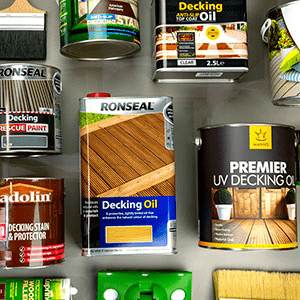Wood Glue FAQ's
What is the best adhesive for engineered floor boards?
Bona Quantum is widely considered to be one of the best "all-rounder" adhesives on the market today and is the direct replacement for the Bona R850 Adhesive that has now been discontinued. It has good initial grab and is perfect for engineered and solid wood planks and parquet. It causes practically no swelling of the wood as it's water and solvent free.
Osmo MS Advance Wood Floor Adhesive is another similar adhesive also formulated for the installation of interior wood block parquet, engineered wood plank and pre-finished and unfinished solid wood flooring. It has a moisture inhibitor and some sound reducing properties.
What wood glue or adhesive is best for my finger parquet wood flooring?
The Bona Vertical is the best adhesive for finger parquet flooring and very narrow boards. It offers good 'elasticity' and is a one component adhesive.
I have end grain flooring to install. What is the best adhesive for this?
Bona Titan is one of the strongest wood flooring adhesives currently on the market. With very high bonding strength and high initial grab, it's suitable for all physically sound subfloors, for installing end grain flooring and very wide, over-sized solid boards.
Can you use flooring adhesive to install skirting boards?
In short, yes. But you can also use Bona Vertical which comes in a smaller size, 310ml mastic tube for easier application in a mastic gun for minimal wastage.
I have moisture in my subfloor but need to install wooden flooring. What can I do?
Bona R540 is a a highly effective moisture barrier on cementitious sub-floors, even where the relative humidity is as high as 90 - 100%. This can block the moisture and form a good base to applying your flooring adhesive to before laying your wooden flooring. It's also an effective primer for weaker sub-floors too.
Is PVA glue safe on skin?
Polyvinyl acetate adhesive (PVA glue) is a remarkably versatile, water-based glue that dries quickly at room temperature with good air circulation. It is non-toxic, doesn't emit harmful fumes and doesn't cause skin irritation. But it should not be ingested. Read more about the versatility of PVA adhesive and its remarkable and varied uses in our blog.
What is 'PU Glue'?
PU Glue is just an abbreviation for Polyurethane Glue. Polyurethane glues are made from chemicals sharing similar chemistry. It is a polymer composed of units of organic chains joined by urethane or carbamate links.
PU Glues have many benefits and can be used to stick most things including different materials together. It is successful in bonding non porous materials such as metal to wood, or mirrors to walls. Some compositions have a long work time of 20 or more. This allows for leisurely working and clamping time. Depending on the glue it can set quite quickly after clamping and allow the user to continue work as the glue completes its curing. A major advantage over many adhesives is its ability to set in high moisture conditions. IN fact it needs moisture to set and will cure faster in conditions where other glues, such as epoxy, cannot be used.
Wood Glue related blog posts
Disclaimer: Whilst every attempt has been made to provide product information that is as accurate as possible, it's important to clarify that trees and the wood that they produce can be affected by many factors. For example, the same species of tree grown in the same wood, even in close proximity, will be affected by age along with the amount of sunlight and water they receive. Other naturally occurring biological and environmental factors will also influence the density and grain of the wood as well as the moisture and oil content of the timber. No two trees are the same, meaning each piece of wood has the potential to look and react differently to the same wood finish. For example, product adhesion, colour variations, absorption rates and sheen levels. It is for this reason that we always strongly recommend carrying out test areas before starting any project


